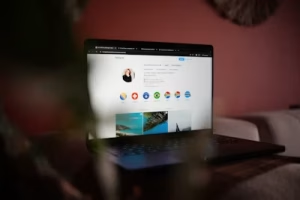Instagram Niche Down Strategy Audience Targeting
Be honest—have you ever spent weeks posting on Instagram only to get likes from your mom, a random bot, and a friend from high school? I’ve been there. I thought posting about “marketing tips” would get me noticed, but nothing stuck.
The turning point came when I niched down. Instead of “marketing tips for everyone,” I focused on Instagram growth hacks for local cafés. Suddenly, engagement spiked, comments flowed in, and my small following felt like a real community.
That’s the power of a niche-down strategy combined with audience targeting. On Instagram, if you try to speak to everyone, you’ll end up speaking to no one. But when you create content for a focused audience, you stand out, connect, and grow faster.
Let’s dive deep into how you can nail this.
Competitor Analysis: What Top Articles Cover (and Miss)
Before writing this, I analyzed 5 top-ranking blogs around Instagram niche and targeting. Here’s what I found:
- They cover broad niche ideas. For example, Printify’s blog lists popular niches like fashion, travel, and fitness.
- They explain why niches matter. Blogs like Ink & Olive Media emphasize how narrowing helps engagement and monetization.
- They discuss ad targeting basics. Some guides, like Karola Karlson’s blog, explain Instagram ad audience features.
- They mention micro-communities. Prose Media touches on targeting niche groups with ads.
The gaps?
- Few walk you through a step-by-step niche validation process.
- Most don’t show real-world examples or mini case studies.
- They rarely discuss the downsides of niching too hard.
This article will fill those gaps.
What Niching Down Really Means
- Niche-down strategy: Choosing a narrow focus for your content—like “vegan meal prep for college students” instead of just “recipes.”
- Audience targeting: Actively reaching the right people (by interests, demographics, or behaviors) so your niche actually connects.
When these two work together, magic happens:
- Your content feels hyper-relevant.
- Followers trust you more.
- Ads perform better.
- Growth compounds faster.
Step 1: Brainstorm & Narrow Your Niche
Here’s a simple exercise:
- List what you love + know. Example: cooking, photography, small business.
- Overlay your brand/business goals. If you’re in SaaS, maybe focus on content for startups.
- Find sub-niches. Instead of “fitness,” go for “strength training for busy moms.”
- Check demand. Look at hashtags, search volume, or trending reels.
- Spot the gap. If every big creator covers general “photography,” maybe focus on “phone photography for product shots.”
Example: Instead of “Instagram marketing,” a SaaS brand like Lunavistahub could focus on “UGC marketing strategies for D2C beauty brands.”

Step 2: Validate Your Niche with Data
Don’t just guess—test.
- Hashtag research. Search your potential niche tags. If they have fewer than ~10k posts, they may be too small; if they have 10M+, too broad.
- Competitor scan. Who else is serving that audience? What’s working for them?
- Micro content tests. Post 10–15 niche-specific reels, stories, or carousels over 2–4 weeks. Measure engagement rates.
- Low-budget ad test. Spend $5–10/day targeting your niche interests. See if engagement and clicks are strong.
Step 3: Define Your Audience Persona
The better you know your person, the easier it is to create for them.
Example Persona: “D2C Beauty Brand Owner Diya”
- Age: 25–35
- Location: US/India
- Pain: Needs authentic UGC but struggles to source it
- Goal: Boost trust and conversions
- Channels: Instagram, TikTok
- Voice preference: Casual, encouraging, actionable
When you have this clarity, your posts feel like 1:1 conversations.
Step 4: Build Content Pillars Around Your Niche
Pick 3–5 content “pillars” and rotate. Example for a UGC-focused niche:
- UGC sourcing tips (how to find creators)
- Content repurposing (turn UGC into reels or ads)
- Trust-building tactics (social proof strategies)
- Case studies (brand wins)
- Ad creative hacks (using UGC in targeting campaigns)
This keeps your niche consistent yet varied.
Step 5: Organic Audience Targeting Tactics
1. Smart Hashtags
Mix small, mid, and big hashtags. Rotate them often.
2. Community Engagement
Comment on posts in your niche. Reply to stories. Join IG Lives. This builds trust faster than lurking. (If you’re curious, here’s a deeper dive into why Instagram Live videos boost account visibility).
3. Collaborations
Team up with micro-influencers in your niche. Do lives, takeovers, or collab reels.
4. UGC Features
Encourage followers to share content and tag you. Feature them—people love recognition.
5. Reels & Stories
IG pushes Reels hard. Combine trending audios with niche-specific angles. You can also check out which Instagram content types perform best with the algorithm to refine your strategy.
Step 6: Paid Audience Targeting Tactics
Instagram Ads are where niche focus shines.
- Saved Audiences: Narrow by age, location, and interests.
- Custom Audiences: Upload your email list or retarget engagers.
- Lookalikes: Build lookalikes from your top followers/customers.
- Micro-community targeting: Find groups with overlapping niche interests (e.g., “vegan skincare” + “eco-friendly shopping”).
Creative tip: Use authentic UGC as ad creative—it performs better because it feels real.
Pitfalls of Niching Down
Niching is powerful, but beware:
| Challenge | Fix |
| Too small a niche | Go slightly broader, e.g. “vegan skincare” instead of “vegan face masks.” |
| Limited ad targeting options | Use custom or lookalike audiences. |
| Audience fatigue | Refresh creatives regularly. |
| Weak monetization | Test offers early, not after a year of content. |
Some marketers even argue that over-niching can limit growth—the key is balance. (Medium)
Real-World Mini Case
A creator posting “pet art” struggled for traction. When she niched down to exotic pet portraits (ferrets, lizards, parrots), engagement skyrocketed. She later landed UGC deals with exotic pet supply brands.
Specificity created opportunity.
EEAT & SEO Integration
To strengthen your Instagram + blog game:
- Add case studies and metrics for authority.
- Publish consistently.
- Encourage comments, shares, and saves.
- Cross-link your posts and build topical clusters.
- Use semantic keywords like micro-niche Instagram growth, IG persona targeting, community engagement strategies.
Platforms like Lunavistahub can help centralize UGC collection and repurposing, saving brands time while keeping engagement authentic.
Narrow to Grow
Here’s the bottom line: broad Instagram strategies get lost in the noise. A niche-down strategy paired with smart audience targeting makes your content feel tailored, your ads cheaper, and your community stronger.
Start today:
- Brainstorm niche ideas.
- Validate with tests.
- Build your persona.
- Post with content pillars.
- Use organic + paid targeting.
- Track, adjust, and grow.
When you go narrow, you actually grow faster. Don’t try to be everywhere—be the one your niche looks to.

FAQs
Q1. How narrow is too narrow for a niche?
If you can’t find an IG hashtag, interest targeting option, or 10k+ potential audience, it may be too narrow.
Q2. Can I change my niche later?
Yes, but shift gradually into adjacent topics. Sudden shifts confuse your audience.
Q3. Should small creators niche down?
Absolutely—it’s often the fastest way to grow early.
Q4. How do I measure niche success?
Track engagement rate, follower quality, conversion metrics, and ad ROI.
Q5. What if my niche content flops?
Test 2–3 niches. Double down on the one with the best engagement.
Q6. Is niching down only for influencers?
No—brands benefit too. It helps you target customers more effectively.
Q7. How do ads fit into niching down?
Ads amplify your reach within your chosen audience, especially when paired with UGC content.
Q8. Can niching limit opportunities?
Sometimes—but you can always expand after building authority in one area.

